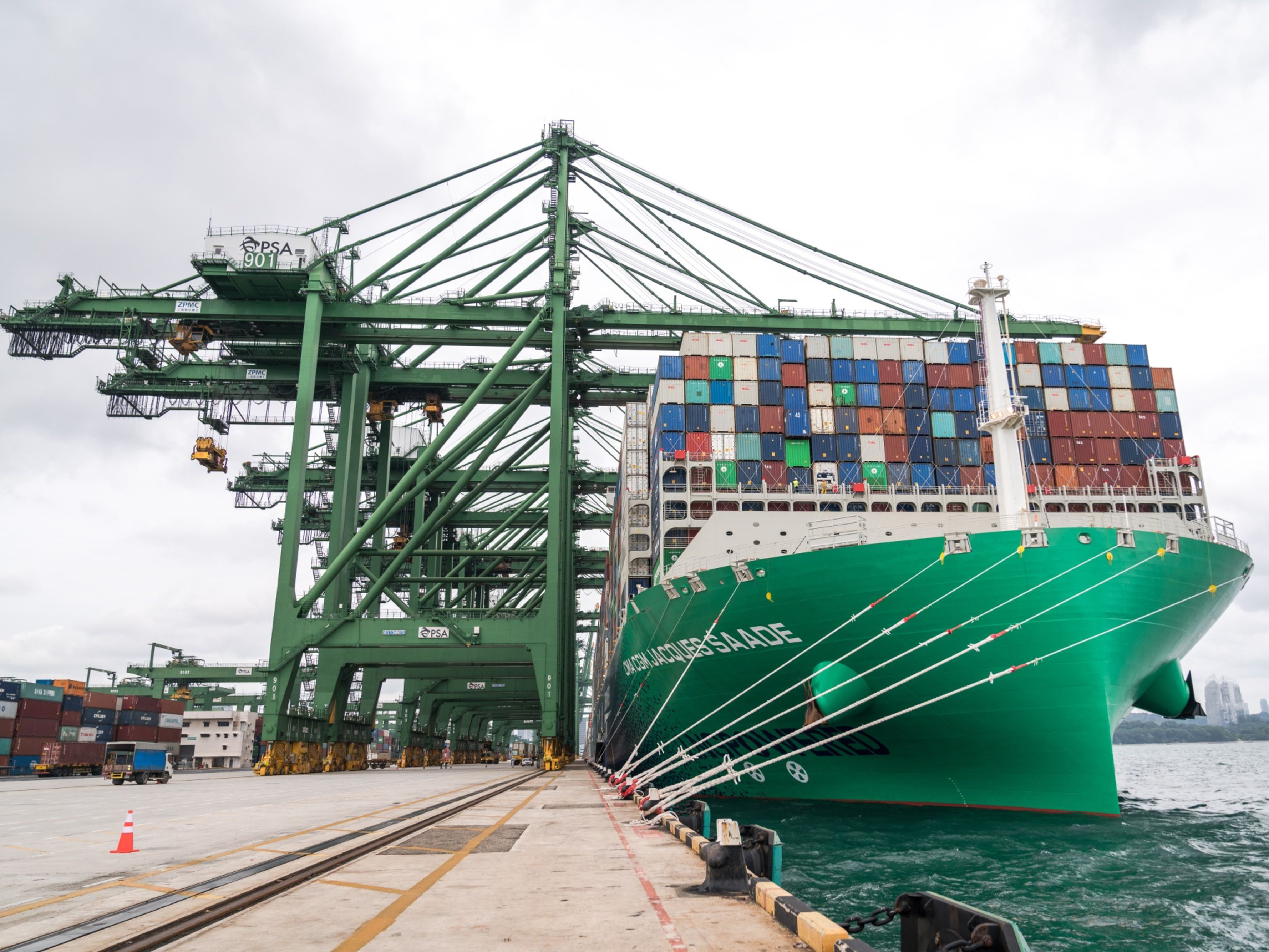
Visit Our Sponsors |
|
|
|
|
|
|
|
|
|
|
|
|
|
|
|
|
|
|
|
|
|
|
|
|
|
|
|
|
|
|
|
|
|
|
|
|
|
|
|
|
|
|
|
|
|
|
|
|
|
|
|
|
|
|
|
|

Stuck in a loop of fluctuating demand, capacity problems and ongoing disruptions, shippers and third-party logistics providers say they’re investing in technology that connects people, processes and information to navigate supply chain challenges, according to a new study.
The 2022 Third-Party Logistics Study, released Monday at the Council of Supply Chain Management Professionals (CSCMP) EDGE conference in Atlanta, offers insights into the current state of the 3PL market and industry issues — including sustainability, the effects of COVID-19, and supply chain visibility.
"Technology is an ever increasingly vital component of the cutting-edge supply chain," said Andy Moses, senior vice president of sales and solutions for Penske Logistics, a study sponsor. More visibility “directly leads to better and more timely decision making," he said.
Moses discussed the report's findings during the annual event with John Langley, study author and clinical professor of supply chain management at Penn State University, and Sylvie Thompson, supply chain transformation practice leader at NTT DATA Consulting.
5G, IoT
Promising technologies include 5G, internet of things and data analytics, and real-time data transmission. More than half of shippers (52%) and 3PLs (63%) said 5G technology is moderately or critically important.
3PLs said they are investing in IoT technology to improve workforce productivity (63%), improve real-time decision making (57%) and create a competitive differentiator in the market (57%). Shippers are also investing in improving real-time decision making (53%), but also to improve customer satisfaction (53%), improve workforce productivity (33%) and improve asset utilization (33%).
Providing real-time data, which enables visibility and exception management, can create a competitive advantage for 3PLs. Providers are investing in the technology, with 53% of 3PLs reporting that they can provide real-time data to clients in 50% or more of their supply chain services and 23% reporting they offer it in a quarter to a half of their services.
COVID-19 as a Catalyst for Change
The COVID-19 pandemic has exposed vulnerabilities within supply chains, including the risk of just-in-time inventory and the potential benefits of moving production closer to the point of consumption.
The study looked at areas most impacted by the pandemic for shippers, which included international transportation and logistics (43%), sourcing and procurement (30%) and manufacturing (24%). 3PLs were most impacted by labor and workforce management (33%), manufacturing (24%) and international transportation and logistics (23%).
More than half of shippers (62%) said they believe that supply chains have become too lean, taking out too much to reduce cost and on-hand inventory.
Additionally, 68% of shippers believe that supply chains have become too global and must be rebalanced towards more regional and local/domestic ecosystems within larger global enterprises. The majority of shippers — 83% — said they plan to adjust sources of supply as a direct result of efforts to rebalance towards regional and local/domestic sources.
For shippers, several factors are contributing towards global rebalancing, including increased need for supply chain resilience (71%), increased awareness of supply chain vulnerabilities (63%) and more restrictive trade policies (41%).
Growth in Cold Chain
COVID-19 has also accelerated demand within the cold chain. Most shippers, 91%, and 3PLs, 100%, said they expect demand for cold chain capacity to increase over the next three years. Both shippers (70%) and 3PLs (52%) said COVID-19 has accelerated their growth plans, increasing their need for more cold chain capacity.
As a result, 70% of shippers said they expect to grow inhouse cold chain capabilities and talent over the next three years, while 50% said they plan to outsource more of their cold chain capabilities. About 90% of 3PLs said they plan to expand their cold chain capabilities and service offering.
Significance of Sustainability
Sustainability is a growing priority for investors, employees, consumers and the public, and supply chains hold some of the most significant opportunities for breakthroughs and advancements in this critical area.
Key drivers for established environmental, social, governance (ESG) programs include consumer trends and preferences and environment and climate impacts, followed by diversity, equity and inclusion (DEI) and social contribution and responsibility.
Among shippers, 59% indicated their organization had an ESG program with defined goals and objectives, and 51% said their supply chain had an ESG program with defined goals and objectives. Just under half of 3PL providers, 45%, said their organization had an established ESG program.
Only 20% of shippers feel that their 3PLs' ESG programs are further ahead of their own programs, while 65% of 3PL providers feel that their customers' ESG programs are further ahead of their own programs.
There are challenges associated with implementing an ESG program, including cost, which was cited by 67% of shippers and 52% of logistics providers. However, just 8% of shippers and providers felt that the inability to validate return-on-investment improvements represented a prevalent challenge.
Outsourcing vs. Insourcing
The number of shippers that outsource domestic transportation services decreased from 74% in 2020 to 67% this year, and outsourcing of international transportation services dropped from 62% to 44%. Other shifts in the past year:
Researchers said it’s unclear whether these numbers indicate a longer-term trend.
"Outsourcing transportation planning and management and freight bill auditing and payment services are a value-added service,” Thompson said, “but these could be the first areas you cut back on if your revenue is down and you need to cut costs."
RELATED CONTENT
RELATED VIDEOS
Timely, incisive articles delivered directly to your inbox.







